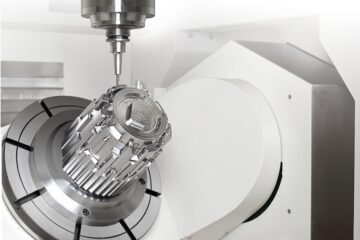In the quest to save electricity and ensure safety in our homes and workplaces, understanding the role of circuit breakers and fuses is essential. These devices are critical components in electrical systems, protecting circuits from overloads and preventing potential hazards like fires and electrical shocks. This article explores the functions, types, and importance of circuit breakers and fuses in modern electrical systems.
The Basics of Circuit Breakers and Fuses
What are Circuit Breakers?
Circuit breakers are automatic electrical switches designed to protect electrical circuits from damage caused by overloads or short circuits. They work by interrupting the flow of electricity when a fault is detected, thus preventing overheating and potential fire hazards. Circuit breakers can be reset manually or automatically to resume normal operation once the issue is resolved.
What are Fuses?
Fuses are electrical safety devices that protect circuits by breaking the connection when excessive current flows through them. Unlike circuit breakers, fuses contain a metal wire or filament that melts when overheated, thereby interrupting the electrical flow. Once a fuse blows, it must be replaced with a new one to restore functionality.
How Do Circuit Breakers and Fuses Save Electricity?
While circuit breakers and fuses do not directly save electricity by reducing consumption, they play a crucial role in maintaining the efficiency and safety of electrical systems. Here’s how they contribute:
- Preventing Energy Waste: By protecting against electrical faults, circuit breakers and fuses prevent energy waste due to short circuits or overloads. Faulty wiring and damaged appliances can draw excess current, leading to unnecessary energy consumption.
- Ensuring Safe Operation: Electrical systems that operate safely and efficiently are less likely to experience downtime or damage, leading to consistent and optimal energy use.
- Protecting Equipment: By safeguarding electrical appliances and systems from damage, these devices help maintain the longevity and performance of equipment, ensuring they operate efficiently and do not consume more power than necessary.
Types of Circuit Breakers
1. Miniature Circuit Breakers (MCBs)
MCBs are commonly used in residential and commercial buildings to protect individual circuits. They are designed to trip and interrupt the flow of electricity in case of an overload or short circuit.
2. Molded Case Circuit Breakers (MCCBs)
MCCBs are suitable for higher capacity circuits and industrial applications. They offer adjustable trip settings and can handle larger currents compared to MCBs.
3. Ground Fault Circuit Interrupters (GFCIs)
GFCIs are designed to protect against ground faults, which occur when electricity flows through an unintended path, such as water or a person. These breakers are essential in areas with high moisture levels, like bathrooms and kitchens.
4. Arc Fault Circuit Interrupters (AFCIs)
AFCIs protect against arc faults, which can cause fires. They detect dangerous electrical arcs and interrupt the circuit before any damage occurs, making them crucial for preventing electrical fires.
Types of Fuses
1. Cartridge Fuses
Cartridge fuses are cylindrical in shape and used in both residential and industrial applications. They are available in various sizes and ratings to protect different types of circuits.
2. Plug Fuses
Plug fuses are used in older electrical systems and screw into a socket like a light bulb. They are typically found in residential fuse boxes.
3. Blade Fuses
Blade fuses are commonly used in automotive applications. They have a plastic body with two metal prongs that fit into a socket.
4. Resettable Fuses
Resettable fuses, also known as polymeric positive temperature coefficient (PPTC) fuses, can reset themselves after the fault condition is cleared. They are used in applications where replacing a fuse is impractical.
Importance of Proper Installation and Maintenance
To ensure the effectiveness of circuit breakers and fuses in saving electricity and protecting electrical systems, proper installation and regular maintenance are crucial:
- Correct Sizing: Selecting the right size and type of breaker or fuse for each circuit is essential. Undersized devices can cause nuisance trips, while oversized ones may not provide adequate protection.
- Routine Inspection: Regular inspection and testing of circuit breakers and fuses help identify potential issues before they cause significant problems. This includes checking for signs of wear, corrosion, or damage.
- Professional Installation: Engaging a licensed electrician for installation and maintenance ensures compliance with safety standards and proper functioning of electrical protection devices.
Conclusion
Circuit breakers and fuses are vital components in electrical systems, playing a key role in safety and efficiency. By preventing overloads, short circuits, and other electrical faults, these devices help save electricity indirectly by maintaining optimal operation and preventing energy waste. Understanding their functions, types, and importance can help homeowners and businesses make informed decisions about electrical safety and efficiency. Proper installation, regular maintenance, and the right choice of protection devices are essential steps towards a safe and energy-efficient electrical system.
4o


